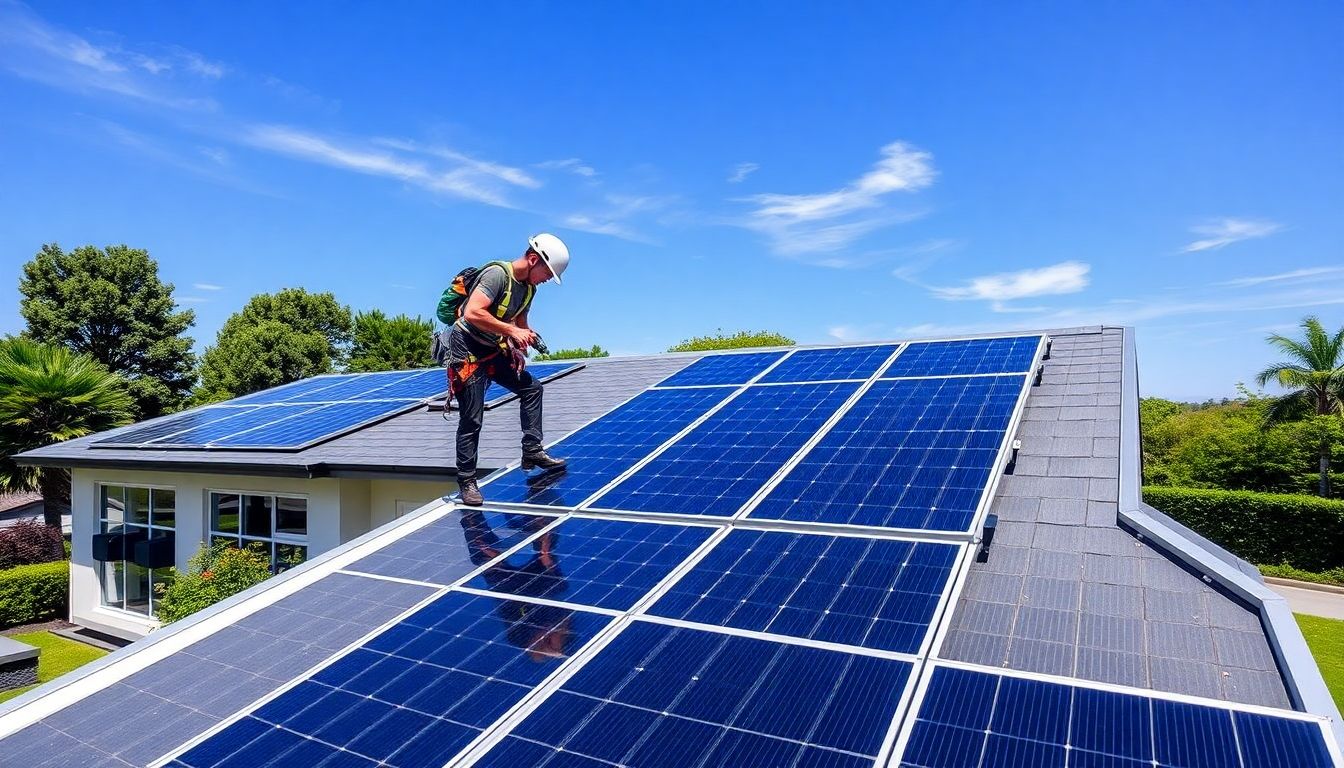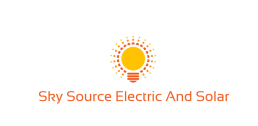
Installing Solar Panels: Transitioning to Renewable Energy
Introduction
Solar energy is rising in popularity for homes and businesses. It’s a clean, affordable way to power your life. As more people seek greener options, installing solar panels becomes a smart choice. It’s not just good for the planet; it can also cut your electricity bills significantly. Still, many wonder if solar makes sense for their property. Some worry about costs or complicated setup processes. The truth is, proper planning and professional installation make all the difference. Let’s explore how you can switch to solar smoothly and get the best results.
Understanding Solar Panel Basics
What Are Solar Panels and How Do They Work?
Solar panels capture sunlight and turn it into electricity using technology called photovoltaics. These panels contain tiny cells made of silicon. When sunlight hits these cells, they generate electricity through a process called the photovoltaic effect. There are three main types of solar panels:
- Monocrystalline: Known for high efficiency and sleek look, but usually cost more.
- Polycrystalline: Slightly less efficient but more affordable and still reliable.
- Thin-Film: Lightweight and flexible, ideal for unique spaces, but usually less efficient.
Each type offers a different mix of cost, performance, and appearance. Knowing which suits your needs helps you choose the right system.
Benefits of Installing Solar Panels
Solar panels help reduce your carbon footprint by cutting down greenhouse gases. This makes your home or business greener and cleaner. Financially, solar can shrink your energy bills over time. Many governments offer incentives, rebates, and tax credits to make installations more affordable. These perks can cover a big chunk of the upfront costs, speeding up your return on investment. Plus, having solar on your property can boost its value and appeal.
Factors Influencing Solar Panel Efficiency
The amount of energy your system produces depends on several things. Your location determines how much sunlight your panels can soak up. Homes surrounded by trees or tall buildings might block sunlight, causing less power. Proper orientation—facing the sun—is key. Panels should ideally face south (in the Northern Hemisphere). The tilt angle also impacts performance; a slight angle that matches your latitude usually works best.
Planning Your Solar Panel Installation
Assessing Your Energy Needs
Start by looking at how much energy your household or business uses. Check utility bills from the past year. This helps estimate the size of the system you need. If you use 900 kWh monthly, your solar setup should generate around that amount. This ensures you produce enough power for your daily needs with less reliance on the grid.
Evaluating Your Property’s Suitability
Your roof’s condition matters. Make sure it’s sturdy enough to hold solar panels. Also, check the roof’s orientation—surfaces facing south work best. Shading from trees or nearby structures can cut your system’s output. If your roof isn’t suitable, ground-mounted systems are an option. These can be placed where sunlight is clearer and more direct.
Selecting the Right Solar Panel System
Think about whether you want a grid-tied or off-grid system. Grid-tied connects to your utility, allowing you to sell excess power back. Off-grid systems rely completely on your solar setup and batteries. Hybrid options combine both. Batteries store excess energy for use during cloudy days or at night. Consider future needs—scalability lets you add more panels or storage later if your energy use grows.
Hiring Professional Solar Installers
Finding Qualified Solar Installation Contractors
Choose installers with proper credentials, like the NABCEP certification. Check reviews and ask for past work examples. Comparing multiple quotes helps find the best price and service. Never settle for the first offer. Ensuring your installer is experienced saves hassle later.
Questions to Ask Potential Installers
Inquire about their experience with similar homes or businesses. Ask about the timeline from start to finish. What warranties do they offer for panels and labor? Will they handle permits? Understanding their process gives peace of mind.
Understanding Permitting and Regulatory Requirements
Local rules vary, so check your city or county regulations. Permits are usually needed before installation. Inspections often follow to confirm safety standards. Your installer should guide you through these steps. Utility companies may require approval to connect your system to the grid.
The Installation Process
Pre-Installation Preparations
Before work begins, site assessments determine the best system design. Your installer will secure permits and ensure electrical wiring upgrades if needed. Making sure everything is in order helps avoid delays.
Actual Installation Steps
Installers prepare your roof with mounting brackets. Panels are securely attached, then wired to the inverter—a device that converts sunlight into usable electricity. Once connected, the system undergoes testing to confirm it works correctly. Final checks ensure safety and optimal performance.
Post-Installation Checklist
After setup, verify system output matches expectations. Schedule a final inspection and complete paperwork for insurance or incentives. Register your system to qualify for rebates or tax credits. Proper documentation is vital for future support.
Maintaining and Monitoring Your Solar System
Routine Maintenance Tips
Keep panels clean by washing off dirt and leaves. Trim nearby trees that cast shadows. Regularly inspect for cracks or damage. Use monitoring software or apps to track energy production and catch problems early.
Troubleshooting Common Issues
If power output drops, check for shading or dirt. Inverter faults may require professional repair. High system efficiency is key to getting the full benefits of solar. Don’t hesitate to consult a technician if issues persist.
Maximizing System Longevity
Protect panels from physical damage, like hail or debris. Stay updated on new solar tech developments. Consider upgrades if your energy needs grow or technology advances. Good maintenance extends your system’s lifespan and keeps it working smoothly.
Conclusion
Switching to solar involves careful planning, choosing the right system, and hiring skilled professionals. Your investment pays off through lower bills and a cleaner environment. A well-installed system offers decades of reliable power. Taking proactive steps today makes your move to renewable energy easier and more affordable. Start exploring your options now—your future self will thank you!

Recent Comments